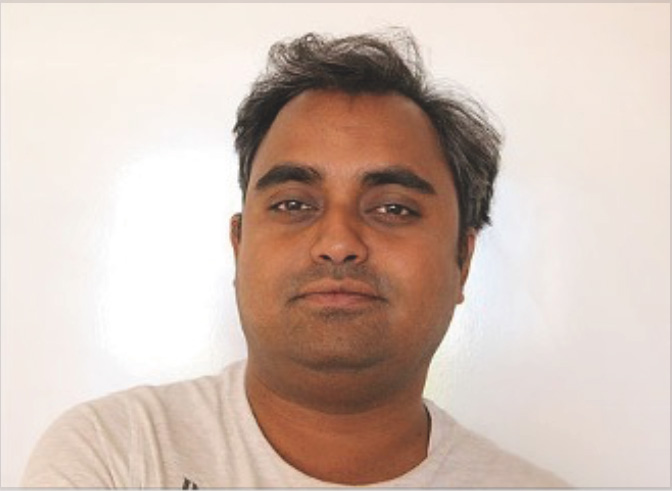In this talk, I would like to present a two-fold research activity interconnected with a common string “Catalysis”. The first part would be dedicated to the fundamental mechanism for the solar irradiated water splitting in photocatalytic materials with the future prospect of Non-linear Poisson Boltzmann Solver development for the heterogenous catalytic mechanism.The relevant exploration of novel 2D materials and their applications in such catalytic mechanism would be elaborated subsequently [1, 2]. The mechanism corresponding to Hydrogen Evolution Reaction (HER) and Oxygen Evolution Reaction (OER) under the influence of doping and vacancy defect from DFT based theoretical perspective would be discussed [3, 4] along with our recent high throughput computational investigation of finding efficient HER catalytic materials based on transition metal tri-chalcogenides [5]. The next part of the talk would be devoted to the fundamental understanding of our recently developed interface between Hybrid Eigen-vector Following (EF) formalism and DFT to predict the Transition Pathway without the prior knowledge of adjacent minima [6]. I will conclude my talk with the external stimuli driven Rashba induced catalytic activity enhancement , where we have successfully demonstrated the effect of strain on the overpotential of the novel catalytic materials through the tuning of Rashba splitting.
References
- S. Tomar, Sudip Chakraborty, Sustainable Energy & Fuels, 7, 4668 (2023)
- S. Tomar, P. Sen, Sudip Chakraborty, Sustainable Energy & Fuels, 6, 5337 (2022).
- S. Mondal…Sudip Chakraborty, S. Peter, Advanced Materials, 34, 2202294 (2022).
- J. Yang….Sudip Chakraborty, Manish Chhowalla, ACS Nano, 13, 9958 (2019).
- I. Seymour, Sudip Chakraborty, D. Middlemiss, D. J. Wales, C. P. Grey, Chem. Mater. 27, 5550 (2015).
- S. Sarkar…Sudip Chakraborty, S Peter, ACS Catalysis, 11, 800 (2021).
Research-web:- https://sudiphys.wixsite.com/ceslab-sudip/research-publications
Biography

Dr. Sudip Chakraborty is leading Materials Theory for Energy Scavenging (MATES Lab) (https://sudiphys.wixsite.com/ceslab-sudip/research-group) in India’s premier theoretical research Institute Harish-Chandra Research Institute (HRI) Allahabad (Prayagraj), An Aided Institute of the Department of Atomic Energy, Govt. of India. After completing his Ph.D. on modelling semiconductor quantum dots for efficient solar cell materials, in collaboration between Bhabha Atomic Research Centre (BARC) and University of Pune, India, he moved to Max Planck Institute, Düsseldorf, Germany in March, 2011 as a Max Planck Postdoctoral Fellow. In February, 2013, he joined Materials Theory Division, Uppsala University, Sweden to work on photocatalytic Water Splitting, Efficient Battery Materials and Hybrid Perovskites Solar Cell. From March, 2019, he is leading his group in IIT Indore, as Assistant Professor till April, 2021. From May, 2021, he moved to Harish-Chandra Research Institute (HRI), Allahabad as Reader F. Recently, he has been awarded as the Rising Stars by ACS Materials Au, among 300 nominations worldwide, while he is the sole recipient from India. He is in the Editorial Board of Elsevier’s Chemistry of Inorganic Materials, Springer’s Graphene and 2D Materials, IOP’s Electronic Structure and RSC’s Energy Advances. Till now, he has 157 International publications with 5000 citations with 41 h-index
(https://scholar.google.com/citations?hl=en&user=ybAcs3kAAAAJ&view_op=list_works&sortby=pubdat)




